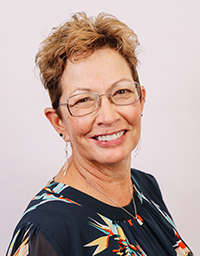• by Kristin E. Grayson, Ph.D. • IDRA Newsletter • March 2014 •
The IDRA PTA Comunitario concept is growing in the Rio Grande Valley. At the same time, this approach to parent engagement is being considered by the Oklahoma City Public Schools. A team from its Language and Cultural Services Department recently visited IDRA to learn about this model. The team also traveled to Pharr, Texas, to meet the pioneers of the ARISE PTA Comunitario, to hear their history of advocacy and courage, and to brainstorm ways this approach could serve Oklahoma City families.
The PTA Comunitarios in the Rio Grande Valley are based on IDRA’s model in which the major feature includes being based with a community-based organization instead of a specific school. They function so that, in this case, Spanish-speaking parents stay informed about school policies, initiatives and actionable data. Actionable data refers to data about the school that parents might want to question and take action on. These might include data about attendance, test scores and graduation rates. For example, if parents find that their school’s graduation rate is low because students are not taking the proper sequence of required courses for the needed credit, parents can ensure that they help their children and others get enrolled in the proper courses at the proper time in order to graduate.
The PTA Comunitarios work to serve the community and the schools associated with that community. They are registered as official PTAs with the National Parent Teacher Association, but they have major differences from a typical PTA. They are community based and are focused on strengthening schools for all children. PTA Comunitario families stay informed about their children’s schools, initiate community programs to help their children, while at the same time they inform the area schools about their families, their needs, and their questions and concerns.
Both of the communities in South Texas and Oklahoma are economically disadvantaged. In the Pharr-San Juan-Alamo school district in Texas, for example, 89 percent of the students are considered economically disadvantaged, while in Oklahoma City that percentage is 91 percent.
While there are similarities between the Spanish-speaking communities in the Texas Rio Grande Valley and Oklahoma City, there also are substantial differences to consider in implementing the PTA Comunitario model in the two locations. Oklahoma City is not a border community and thus has a different geography and history.
Demographics are substantially different for students and staff. There are 40,904 students in the Oklahoma City public school district, of whom 18,000 students (45 percent) are Hispanic and more than 12,000 (29 percent) are English learners from Spanish-speaking homes.
PSJA has a student body of 32,051 comprised of 31,694 students (99 percent) who are Hispanic. Of those students, 11,702 (36.5 percent) use Spanish as a home language, and only 2,820 (8.8 percent) students are also English learners.
Other key differences in the demographics of the two locations are those of teachers and administrators. In PSJA, 92 percent of teachers are Hispanic compared to 4 percent in Oklahoma City.
IDRA and the IDRA South Central Collaborative for Equity brainstormed with the Oklahoma City team about ways the PTA Comunitario model could empower Spanish-speaking parents in their district. In Oklahoma City, there are fewer Hispanic teachers and administrators to serve as role models, and there is a higher percentage of Hispanic students who need to master the English language. Additionally, the PTA Comunitario initiative is one that will be started by the school district in Oklahoma and individual schools instead of by a community-based organization, although leadership will come from the community.
Both IDRA and the Oklahoma City team agreed that the PTA Comunitario model holds great promise for the community in Oklahoma City. There and in the border towns of Texas, the end result is what is important. Both parties want to empower parents to understand and know their schools, to inform schools of their strengths and needs, to participate in the educational process of their children, and to serve as the best advocates for their children’s education.
Resources
IDRA. PTA Comunitario, website (San Antonio, Texas: Intercultural Development Research Association, 2014).
Montemayor, A.M. “Families – School Board Electors and Partners,” IDRA Newsletter (San Antonio, Texas: Intercultural Development Research Association, November-December 2013).
Montemayor, A.M. “PTA Comunitario as a Family Leadership Model – An ‘Investing in Innovation I3 Project,” IDRA Newsletter (San Antonio, Texas: Intercultural Development Research Association, March 2013).
Kristin Grayson, Ph.D., is an education associate in IDRA Field Services. Comments and questions may be directed to her via email at feedback@idra.org.
[©2014, IDRA. This article originally appeared in the March 2014 IDRA Newsletter by the Intercultural Development Research Association. Permission to reproduce this article is granted provided the article is reprinted in its entirety and proper credit is given to IDRA and the author.]


